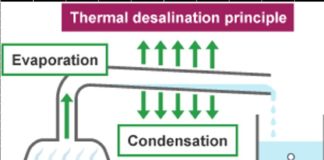Tourism desirable, but problems persist
By any yardstick, the numbers look impressive. There has been an impressive growth in tourism.
According to the Travel & Tourism Competitiveness Index 2015 of the World Economic Forum (WEF), India’s rank climbed up 13 Places to 52 in 2015 from 65 in 2013. The goal is to increase India’s share in world tourist arrivals from the present 0.68% to 1% by 2020, and further increase it to 2% by 2025
But a closer look at the numbers shows that something is amiss.
True, tourism has been growing at over 11% year-on-year. But the growth rates have slowed.
Secondly, much of India’s tourism has focused on domestic tourists. Foreign tourists accounted for just 1.6% of the 1.455 million tourists in 2015.
The world saw this sector account for a whopping US$7.17 trillion of revenues in 2015. That gives this sector a 9.8% share of global GDP. It employed around 283 million people worldwide. And it accounted for investments worth $ 774.6 billion. India’s share of world tourism was a meagre 0.68%. This country saw FDI inflows of just $ 2.109 billion during the past two years.
This does not mean that the government does not have big plans for tourism.
Just visit www.maritimeinvest.in. There you will see some of the ambitious investment plans of the government. It wants to promote cruise and coastal tourism (in addition to golf tourism). For this it has earmarked investments worth $492.68 million. These include building an international cruise terminal at Cochin; modernising Mumbai’s Indira Dock cruise terminal; installing a ropeway service between Mumbai and the neighbouring Elephanta Caves; seaplane operations on the Hoogly river near Kolkata, and development of tourism at 78 lighthouses along India’s coastline.
Incidentally, the above list does not include development plans involving some 2,400 km of (of India’s 7,500 km) coastline by the major ports of India.
Then there is the plan to develop and nurture 13 theme tourist circuits. These include the North-East India Circuit, Buddhist Circuit, Himalayan Circuit, Coastal Circuit, Krishna Circuit, Desert Circuit, Tribal Circuit, Eco Circuit, Wildlife Circuit, Rural Circuit, Spiritual Circuit, Ramayana Circuit and Heritage Circuit. Hopefully, these too will whet the desire of tourists to discover more of India.
The government has also embarked on the Swadesh Darshan programme which envisages the development of world-class infrastructure to enhance the tourist attractiveness, As many as 27 projects have been sanctioned for 21 states and Union Territories since January 2015, involving an outlay of Rs.2,261.50 crore.
It also wants to make tourism a bit easier for foreign tourists. It has already announced an FDI (Foreign Direct Investment) policy reform which allows for 100% FDI for all construction development projects such as construction of hotels and resorts, recreational facilities, and city and regional level infrastructure.
The E-Tourist Visa facility has just been introduced, and medical tourism is being given a boost. During the first six months of 2016, as many as 96,856 medical visas were issued. The government constituted a National Medical & Wellness Tourism Board in October 2015 to help foreign tourists get better access to Indian health care facilities.
But much more is needed. The industry wants the government to grant an export industry status to this sector. The demand is not without good justification. After all, the tourism industry is a very large contributor of foreign exchange earnings.
Moreover, this sector generates employment. In 2014, this industry enjoyed a share of 6.7% of India’s GDP. It sustained almost 36.7 million direct, indirect, and induced jobs. Incidentally, the industry proudly points out that this figure is larger than the jobs created in banking, automotive manufacturing, chemicals manufacturing, education, financial services, and mining sectors.
The industry also wants to combine the tourism sector with the amusement and entertainment industry. But half-thought-out laws and shrill cries against liberal plays or even nightlife do not help. An antiseptic environment is not always the best incentive for promoting tourism.
But most critical is the need to make the tourist feel safe. Rapacious cab drivers, intrusive hawkers and voyeurism are issues that deter foreign (and domestic) tourism. Nobody likes to come to a country where women feel unsafe, and the travel from the airport to the hotel can be fraught with risk. The government’s record in creating special tourist grievance redressal centres where tourists can get judicial redressal of their grievances – from harassment to commercial malpractices – within a day or two. Many tourists have still not forgotten how the son of a senior police officer in Orissa is still at large despite sexually attacking a foreign tourist.
The government’s intentions are truly laudable. But unless the tourist is made to feel safe it is doubtful if they will flock into India in very large numbers (http://www.freepressjournal.in/pending-cases-and-political-criminality/).
India can do a lot more by remaining both safe and liberal. And these are two areas where the government has been found to be wanting.





































COMMENTS